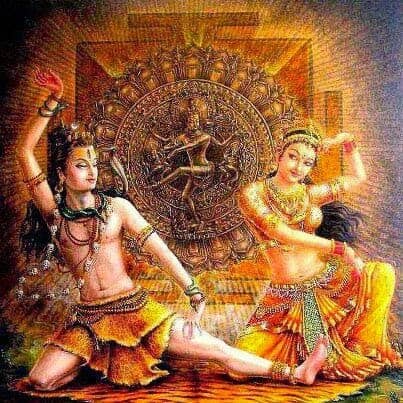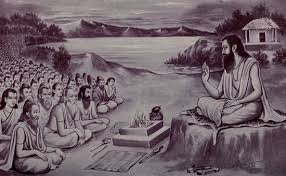Natan ke bhed in kathak
Natan ke bhed in kathak English
we will know the distinction of Natan (Natan ke bhed ) as shown in the book Abhinadarpan written by ancient scriptures and Acharya Nandikeshwar ji. In the ancient scriptures, three distinctions of Natan have been told.
- Natya – Theatrical
- Nritta – Pure dance
- Nritya – Dance with emotion
Natya – Theatrical – ( Natan ke bhed )
The simplest meaning of the play is to do drama. When the actor mimics each step of a historical character apart from himself, the manner of speaking, the manner of speech, the costumes, etc., then it is said that it should be known that any simple imitation (copying) is not a drama. Can say For example, if a child imitates the face or dialect of another child so that people laugh for a moment, then we cannot do it theatrically. Because artistic manifestations involving acting and acting in dramas or dramas are necessary. Because this drama is seen, it is also called Roop this metaphor. Natya, Rup ,Rupa is the name of all three object.
Avasthanukritinatyam rupam dishyatyochyate,
Rupakam tatsamaropato Dushadheva Rasashrayam.
The transitions of the stage are called Natya (drama) theatrical. Having a visible value is called a form. Having similarities, it is called metaphor and there are 10 types of drama from the shelter of rasa. Natya is the best of the three distinctions of verbs of Natan. In Kathak dance, the gatbhav is also considered to be Natya (theatrical).
Nritta ( pure dance) – ( Natan ke bhed )
Nritta, a verb that is expressionless (bhavaabhinay se rahit) in Natan. It is called Nritta. As written in the Abhinaya Darpan.
“bhaavaabhinayaheenan nrittamityabhidheeyate”
In this dance, the predominance of the rhythm of the rhythm is more like it is said Nritya Tal Lyashrayam. According to this primacy, when different types of rhythm and rhythm are performed by organ operation, the same performance is called nritta. Emotion is not performed in this dance. For this reason, it is also called pure dance. Shivaji’s ‘Tandava’ is also basically a dance, so these dances are the most ancient in human art form.
Bharata Muni has told in full detail in the Natyasastra that in the Natya I have been told in detail how and where this dance should be planned. Therefore, this dance drama is going to enhance. This dance is considered very auspicious and for this reason, the dance is performed on all auspicious occasions. Such as marriages, son-births, city or planetary entry, visit of the deity idol, coronation, festival and etc. are performed in the Auspicious days. Thats, tukda, paran, tatkaar, etc. that go to Kathak dance are considered under this dance.
Nritya (combination of Natya & nritta) – ( Natan ke bhed )
This art was born from the union of both the Natya and Nritta arts, so we call it nritya. This dance is composed of rasas and expressions, as stated in Abhinaya Darpan.
“Rasbhavavyanjnadityukayan Nrityamitriyate”
But it has a predominance of emotions as it is eaten in the decipherment.
“Other Bhavashrayan Nritya”
It is based on emotion, in fact, in this dance process, displaying the emotions is done by moving the limbs according to the rhythm. Acharya Nandikeshwar ji has told how the dance is described very beautifully.
Asenalambyade Geetam Hastenartha Pardeshte.
Netrabhyana darsheed bhavam padabhyam talamacharet.
When he sings a song with a mouth. Explain the meaning of the words of that song with the help of the hands. Let the eyes show his expressions and the feet are pushed according to the rhythm, then we call it Nritya ( dance). Nritya is the most attractive and most difficult of the three distinctions of the action of Natan ( Natan ke bhed ). Thumri in the Kathak style, singing Bhajan a verse here, if we can display the sentiment, then we can call it continual.
Natya , nritta and nritya is a development in all three. It is only by the gradual performance of these three that Natan (Nartan) attains perfection. These natan distinctions can be seen in different performances in each of the classical dance styles of India.
Natan ke Bhed in kathak Hindi / नटन के भेद (नर्तन के भेद )
हम जानेगे नटन के भेद जैसा की प्राचीन शास्त्रो व् आचार्य नंदिकेश्वर जी के द्वारा लिखित पुस्तक अभिनयादर्पण में नटन के भेद को दर्शाया गया है। प्राचीन शास्त्रो में नटन के तीन भेद बतलाये गए हैं –
- नाट्य
- नृत्त
- नृत्य







